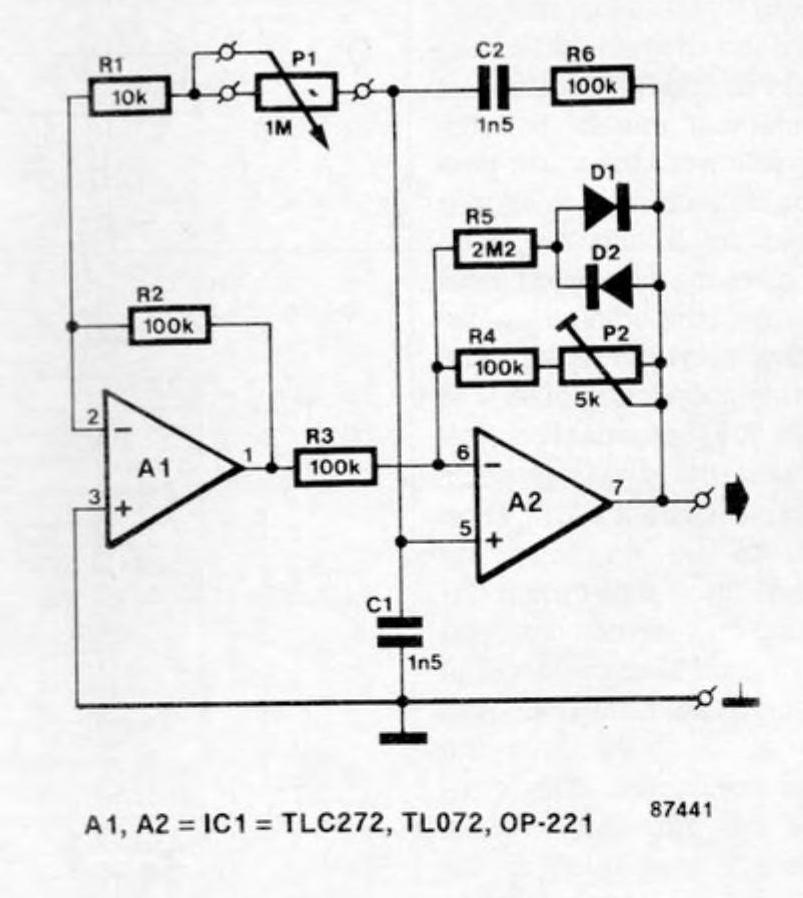I'm trying to understand a Wien Bridge oscillator circuit as published in Elektor 7/1987 on page 63, and I'm getting kind of frustrated. I've reviewed plenty of theory in an attempt to revive my BEng EE knowledge, incl. consuming mind-numbing amounts of Art of Electronics, but still seem to fail at understanding trivial circuits.
As a bit of a preface, I understand Wien oscillator operation in general - why the gain has to be exactly 3 to maintain oscillation, how the RC stages work, JFET AGC with linearisation, or in this case diodes, lamp compensation etc. etc. I also thought I understood the basic workings of op-amps but perhaps not.
Here is the circuit I am talking about, taken from the resource mentioned above:
The magazine claims that this is frequency variable using potentiometer P1. I have seen dual op-amp oscillators happily interfere with just one RC pair to change frequency, so I don't doubt this claim. Though this does bring up side question one:
Side Q1: Does the asymmetric RC adjustment (i.e. leaving C2 and R6, while playing with the C1, R1+P1 pair) cause significant distortion? If so, what is the nature of this distortion? Why does doing this with a single op-amp oscillator almost certainly cause the oscillator to fail?
I can understand most of what's going on in this circuit, especially what's going on on the right half. It's the action of A1 that I am most confused about. (Note that I have tried and failed to simulate this circuit in Falstad and LTSpice.)
It appears to me like an inverting op-amp with loop gain determined by -R2/(R1+P1), buffered by R3 into the inverting input of A2. Here come the questions:
Q1: What is the effect of having A1's output driving A2's - input? In a classic design with a single op-amp, R3 would lead into ground. Is A1's output somehow appearing equivalent to ground using some "virtual ground" trickery? What is the significance of this? What effect does this have on the circuit? Most importantly, why is this being done?
Q2: How does having A1 driving "node 6" not have an impact on the behaviour of the oscillator as a whole. Sure, A2 has hi-Z inputs, but what's stopping current running into and out-of the network containing R5, R4 et. al. Is this okay because A1 can source and sink current just as having "node 1" be ground would?
I'm sure I have a couple of major misunderstandings strewn in here for good measure.
EDIT:
I have modified Neil's circuit from below into a more traditional design to illustrate the nature of this question:
Note that this is fixed frequency, and omits A1. Modifying R1 in this case causes SPICE to have a fit and get caught up about 200ms into the transient simulation. It also seems to ramp to oscillation rather slowly. Why is A1 needed to enable variable frequency?





